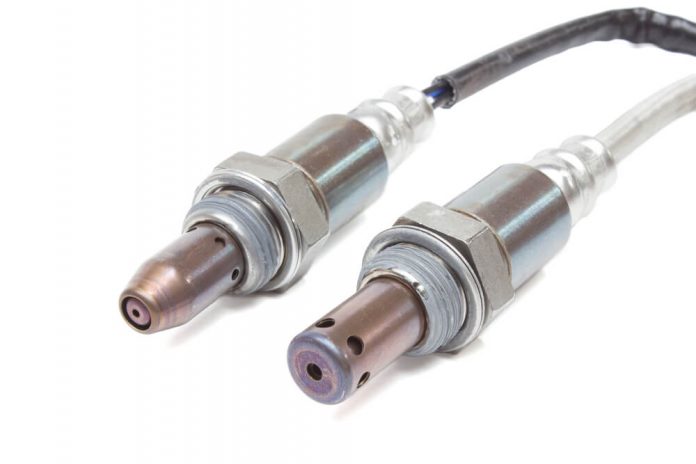By Pratik Kirve
Automotive sensors have been playing a crucial part in ensuring safety and offering a smooth experience to passengers. The innovation in this field knows no bounds and technology companies have been launching their offerings to the world to gain competitive edge and raise their stakes in the global market. From incorporating all the features in a single sensor to monitor cabin conditions to improving field of view through sensors, market players active in the field of electronics and semiconductor sector have been launching their products for different automotive applications. These sensors will play a crucial part in the development of autonomous vehicles. Innovative products are compact and provide more functionality as compared to their previous versions. Many companies have been endeavoring to develop better products than their rival companies, which is estimated to provide competitive edge to them. The launch of innovative sensors for automotive applications will increase in the coming years. According to the report published by Allied Market Research, the global automotive sensor market is estimated to reach $37.65 billion by 2027. Following are some of the activities taking place across the world.
The launch of new sensors for automotive applications is one of the major strategies adopted by players operating in the electronics and semiconductor sector. For ensuring safety and avoiding collisions, one of the leading companies launched a millimeter-wave radar sensor. Texas Instruments (TI) launched an automotive sensor to sense the surrounding with accuracy and avoid collisions. The long-range sensor of the AWR294x family offers 33% higher resolution and 40% longer range than the available sensors in the global market. The company claimed that its sensor is a step ahead of its rival companies such as Infineon Technologies, NXP Semiconductors, and Analog Devices. It also highlighted that this sensor will play a crucial part in autonomous cars.
There are a lot of bulky sensors that contain processors and RF components to identify cars and other obstacles. However, TI integrated a 77-GHz frequency-modulated continuous-wave (FMCW) radar transceiver with processors in a single chip. This chip is of the postage stamp size. In order to reduce the number of accidents on the road, TI upgraded its sensor for determining the objects and obstacles on the road with high accuracy and speed, identifying blind spots, and switching lanes. The company outlined that this sensor can be utilized in technologies such as automated emergency braking (AEB) and advanced driver assistance systems (ADAS).
The development and launch of innovative sensors continue with one of the leading semiconductor technology companies. Samsung Electronics launched an image sensor for automotive applications. The company launched ISOCELL Auto 4AC image sensor that offers high definition resolution for surround-view monitors and rear view cameras. It has a CornerPixel solution along with high dynamic range (HDR) and LED flicker mitigation (LFM) capabilities. It is capable of providing high excellent viewing experience even in low lighting conditions.
Duckhyun Chang, the Executive Vice President of Sensor Business at Samsung Electronics, highlighted the company plans to expand its offerings in the areas such as autonomous driving, camera monitor systems, and in-cabin monitoring with the launch of new sensor. The CornerPixel technology offers an enhanced safety experience with a longer field of view. The company embedded two photodiodes in a single pixel area, a 3.0µm pixel photodiode for low light imaging and a 1.0µm pixel photodiode for bright environments. These photodiodes are able to capture images in both low-light and bright conditions simultaneously. The smooth transition from low to bright environments enables the sensor to capture images with minimal motion blur. The application scope of these sensors is expected to widen.
Innovative sensors with enhanced capabilities continue to launch as tech companies introduce their offerings to the world. Vayyar Imaging, an Israel-based radar technology company, launched its full-cabin monitoring sensor that can monitor the conditions of the whole cabin of passenger vehicle, passengers, and driver. The sensor is capable of determining the passengers based on their sizes and body positions. Moreover, it can detect the presence of child and provide seat belt reminders. All of this can be carried out with a single sensor.
Many companies utilize the combination of two or three sensors to detect the presence of passengers. This also increases the overall cost of sensors used in cars. Vayyer incorporated all functionalities in a single sensor and reported that its sensor covers the whole cabin in low as well as bright lighting conditions along with all weather conditions. It ensures the privacy of users and detects intruders. The company equipped the sensor with 48 transceivers for gaining high resolution of images and wide field of view. This sensor enables deployment of airbags and determines occupant status. The preference of interior sensors in automotive applications is increasing and there will be more sensors coming in the next few years.
About the Author
 Pratik Kirve is writer, blogger, and sport enthusiast. He holds a bachelor degree in Electronics and Telecommunication Engineering, and is currently working as a Team Lead – Content Writing at Allied Market Research. He has avid interest in writing news articles across different verticals. When he is not following updates and trends, he spends his time reading, writing poetry, and playing football. He can be reached at pratik.kirve@alliedmarketresearch.net LinkedIn – https://www.linkedin.com/in/pratik-kirve-8213b284/
Pratik Kirve is writer, blogger, and sport enthusiast. He holds a bachelor degree in Electronics and Telecommunication Engineering, and is currently working as a Team Lead – Content Writing at Allied Market Research. He has avid interest in writing news articles across different verticals. When he is not following updates and trends, he spends his time reading, writing poetry, and playing football. He can be reached at pratik.kirve@alliedmarketresearch.net LinkedIn – https://www.linkedin.com/in/pratik-kirve-8213b284/



































